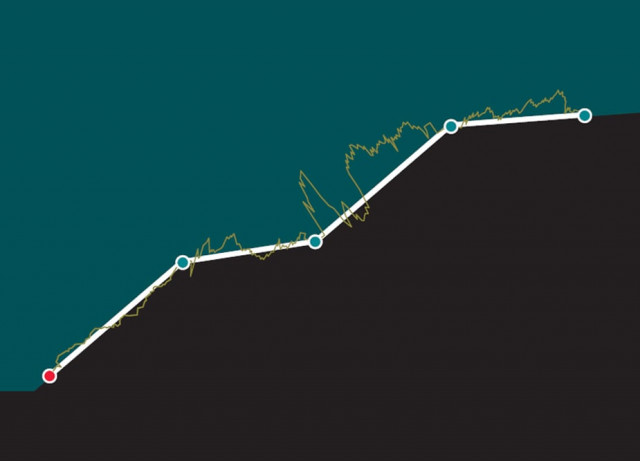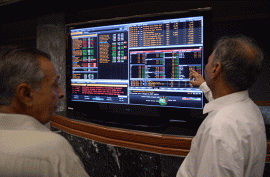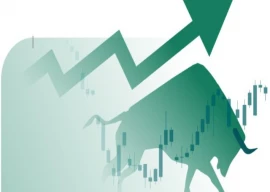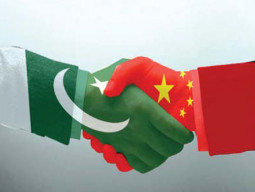
Writing in The News recently, notable economist and former head of the government’s debt reduction office Dr Ashfaq Hasan Khan opposed the monetary policy rise, arguing that the source of the current inflation is largely the price surge in food items because of shortages. For Ashfaq Hasan, this inflation cannot be tackled by macro-economic measures, including monetary policy.
However, the State Bank’s decision to increase the rate seems justified in the face of rising inflation, a negative real interest rate and ever-increasing government borrowing.
The argument that the current inflation is not a monetary phenomenon but is instead driven by food shortages seems to lose ground as the Economic Coordination Committee (ECC) has allowed the Punjab government to export surplus wheat stocks.
Wheat is the single most important factor in the Sensitive Price Index (SPI) and carries a weight of 16 per cent. If inflation was really driven by food shortages, then how can we explain excessive surplus stock of wheat?
Dispelling the myths
There is a popular myth that low interest rates encourage enterprises to take loans and make productive investments, which in turn drive economic growth. This is actually rooted in the idea of business cycle originally theorised by Keynes. There is another adjoining myth that economists refer as the Philip’s Curve, which presents a so-called trade-off between inflation and growth rate.
It is argued here that popular demands to lower the interest rate stem from the above two economic theories. History has refuted both.
Writing for Economic Affairs, Eamonn Butler, co-founder and director of the London-based Adam Smith Institute has argued that a low interest rate causes artificial re-allocation of capital and induces cheap credit, which tempts investors to deal in speculative businesses.
According to Butler, the low interest rate leads to an increase in the demand for both investment and consumption goods – which fuels inflation.
In fact, the Butler argument gainfully explains the rise and fall of Pakistan’s economy over the last 10 years. A reduction in the discount rate from around 14 per cent in 2000 to seven per cent in 2003 resulted in excess liquidity. In the absence of a sound productive sector, this was used by investors in speculative businesses like real estate and stocks.
In around 2007-08, this asset bubble had already begun to burst. It started from a spike in inflation from three per cent to 12 per cent, which touched the high of 25 per cent in 2008-09, thanks also to international oil prices.
Real estate and the stock market collapsed like a house of cards, evaporating savings from the economy. This forced the newly elected government to increasingly rely on borrowing from banks and ultimately, the IMF.
While the asset bubble burst, the discount rate remained largely stable thus only causing inflation to rise further, while eroding purchasing power of masses. Judging from this very recent history, the active stance of monetary policy seems to be on spot.
The claim of business leaders about the impact of an increased discount rate on the cost of borrowing is arithmetically correct. Obviously, it jacks up the cost of capital but at the same time a high interest rate also induces households and firms to park their savings in banks. This actually curtails inflationary expectations.
Think about the millions of pensioners and widows who depend upon the monthly return from banks for their livelihoods and not just about the business houses. Capitalism is not just for capitalists.
Let’s talk in ‘real’ terms
As a matter of fact, even now the real interest rate in the country is effectively negative with the discount rate still trailing the rate of inflation. When real interest rates are negative, there is no incentive for lending and saving. In such an inflationary environment, every individual would rationally spend their money today rather than save for tomorrow.
This would further deepen the inflationary spiral. Thus, effective utilisation of the monetary policy instrument to check the inflation at the right time is extremely important. The stance of the State Bank is vindicated.
Having said that, it is unreasonable to rely solely on monetary tools for sound macro-economic management. The finance ministry must be held responsible for increased level of borrowings, whether for budgetary or commodity operations.
According to the central bank, this excessive borrowing has also contributed towards inflation due to an expanded circulation of money. The government must strictly adhere to the Fiscal Responsibility Act and should contain its fiscal expansion.
Similarly, reliance on the open market for commodity operations rather than controlling them through inept state institutions like the Trading Corporation of Pakistan should relieve some of the fiscal burden which the populist government has taken upon itself.
The author, an economic consultant, is Director Programme and Development at the Alternate Solutions Institute, Lahore. He can be contacted at ali@asinstitute.org
Published in The Express Tribune, December 20th, 2010.


















COMMENTS
Comments are moderated and generally will be posted if they are on-topic and not abusive.
For more information, please see our Comments FAQ